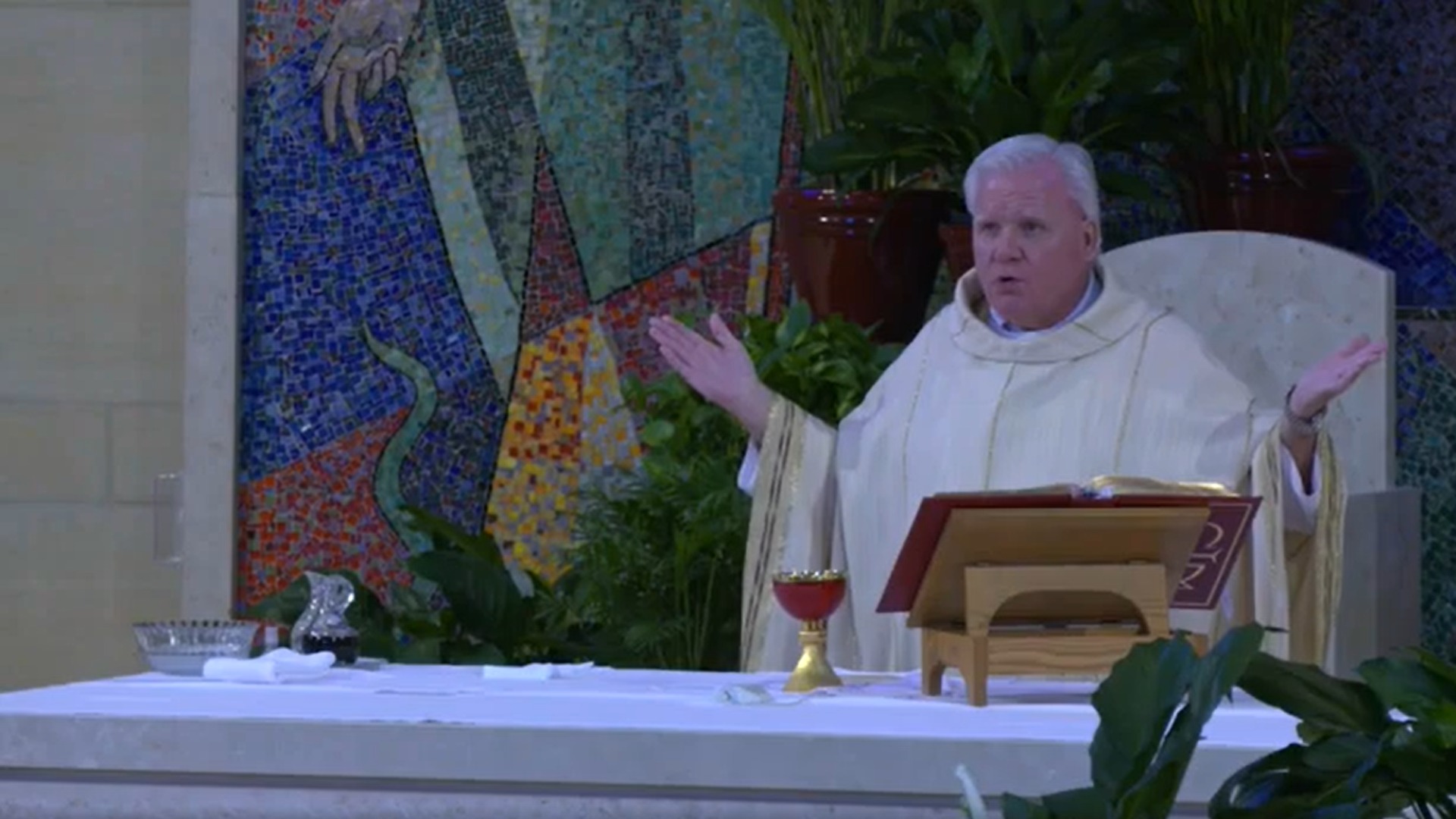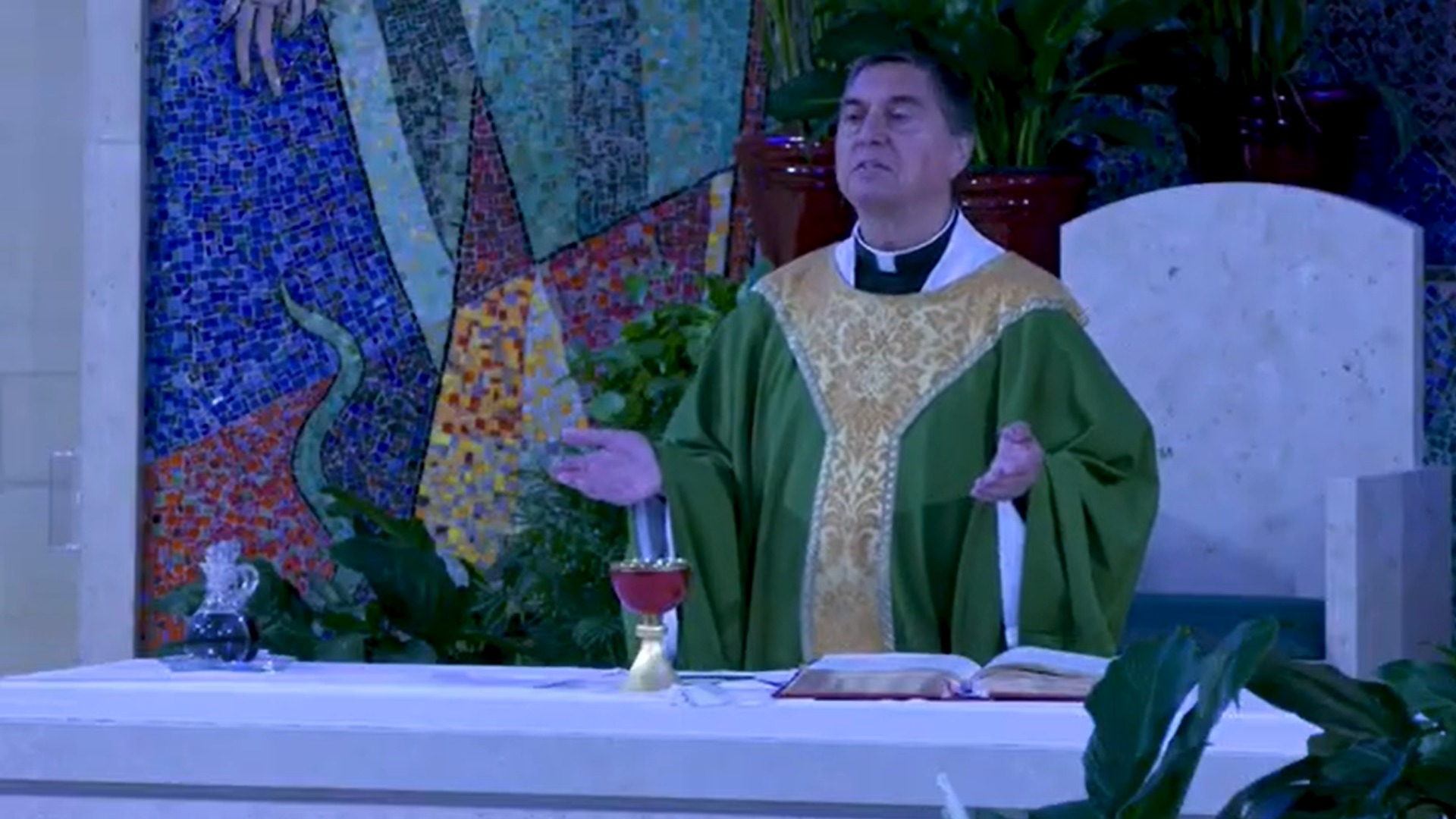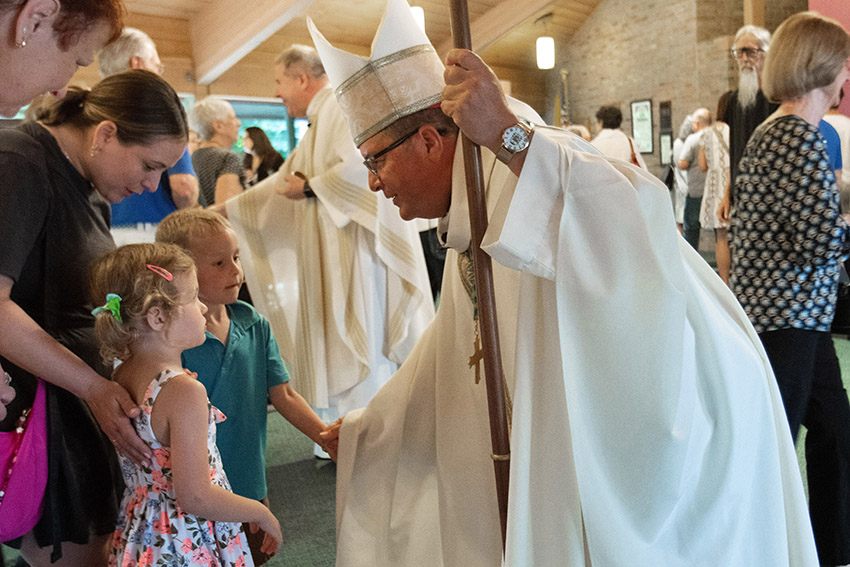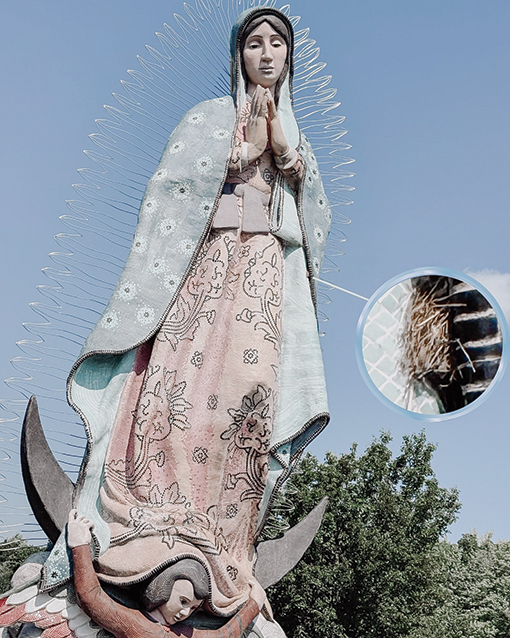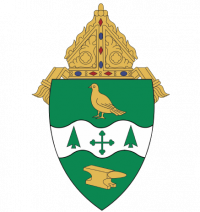I think Saint Joseph helped me land this job. Let me explain. Before I became a writer for The Catholic Echo, I was struggling to find a job. My wife and I had just moved back to the United States from Australia—her home country—where I’d been studying for a master’s in creative writing. Our plan was to come back to America so she could become a citizen of the United States. I was looking for writing jobs but wasn’t having much luck.
When I saw a posting for a staff writer position at The Catholic Echo, I was thrilled. I sent in my application with high hopes but was not expecting anything. To my shock, within a few weeks, I got a response asking for an interview with Katie, our Editor In Chief. I thought it went well, but I didn’t hear anything for a while, and I was getting worried that the job had been filled. I felt even worse than before.
I spoke to my best friend, and he recommended that I pray a novena to Saint Joseph for the intention of finding a job. I was a bit skeptical, but I took his advice and signed up for a 10-day email novena to Saint Joseph. Before I was even halfway through it, I got an email from The Echo asking for a follow-up interview. The rest, as they say, is history.
A common critique of Catholicism from our Protestant brothers and sisters is that we pray to figures other than God—such as Mary and the saints—more often than our Holy Father Himself. However, as we all know, when we pray to a saint, we are not worshipping them, but asking for them to pray for us from heaven and to intercede with God on our behalf. If an intercession does occur, we attribute that action to God, not the saint, but we believe that the saint brought our plea before God.
Praying to a saint in heaven is no different than asking for a friend to pray for you here on Earth. According to James 5:16, “The fervent prayer of a righteous person is very powerful.” (New American Bible, revised edition) Who could be more righteous than those who have achieved sainthood?
Moreover, learning more about the lives of saints can strengthen our own faith. Their stories are a reminder of how God works in our world and can help us understand how God is present, even in the most challenging situations.
The month of October, which is immediately followed by All Saints Day on November 1, is full of various observances dedicated to health. Breast Cancer Awareness month is hard to ignore, as it seems every community is bedecked in pink. But October also contains World Mental Health Day (October 10), World Arthritis Day and World Hospice & Palliative Care Day (October 12), National Pregnancy & Infant Loss Remembrance Day (October 15), World Allergy Awareness Day (October 16), World Menopause Day (October 18), World Osteoporosis Day (October 20), International Stuttering Awareness Day (October 22), World Polio Day (October 24) and World Psoriasis Day and World Stroke Day (October 29). It is also ADHD Awareness month and contains Mental Health Awareness Week.
The inheritance of the Catholic faith is so rich with incredible people who are still accessible to us now, through our prayers—so who are some to whom you can pray for your health or the health of a loved one?
Saint Dymphna: Mental Health
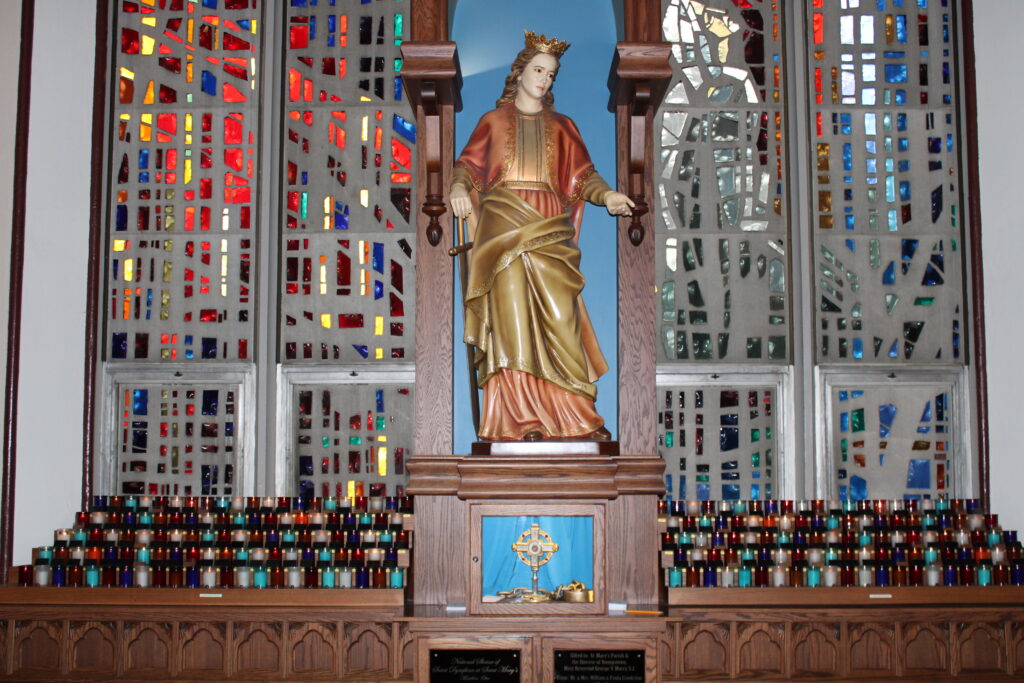
The National Shrine to Saint Dymphna is located right here in our diocese, at St. Mary Church (Divine Mercy Parish) in Massillon. Saint Dymphna is the patron saint of those suffering from nervous or mental disorders. Born in 7th century Ireland to a Christian mother and a pagan father—a relatively wealthy and powerful petty king in the region—Saint Dymphna took a vow of chastity and consecrated herself to Jesus at age 14.
Soon after her consecration, Saint Dymphna’s mother died of unknown causes, and her father, King Damon, became so grief-stricken that he sought to marry the only person on earth who reminded him of his wife—his own daughter.
Saint Dymphna fled Ireland with her confessor, Saint Gerebernus, and a few trusted household servants and hid in what is now known as Geel, Belgium. Reportedly, the group founded a hospital there, but King Damon eventually captured them and ordered the deaths of those who helped Saint Dymphna flee. When Saint Dymphna refused to return to Ireland, he beheaded her. She became known as “Lily de Éire” in honor of her spotless purity and adherence to virtue.
Today, mental illness is a growing problem in our country and around the world. Saint Dymphna is the patron saint for those suffering from these conditions, as well as the health professionals who help treat them.
Prayer to Saint Dymphna:
Good Saint Dymphna, great wonder-worker in every affliction of mind and body, I humbly implore your powerful intercession with Jesus through Mary, the Health of the Sick, in my present need… (mention intention here). Saint Dymphna, martyr of purity, patroness of those who suffer with nervous and mental afflictions, beloved child of Jesus and Mary, pray to them for me and obtain my request. Saint Dymphna, virgin and martyr, pray for us!
Saint Thérèse of Lisieux: Terminal Illness
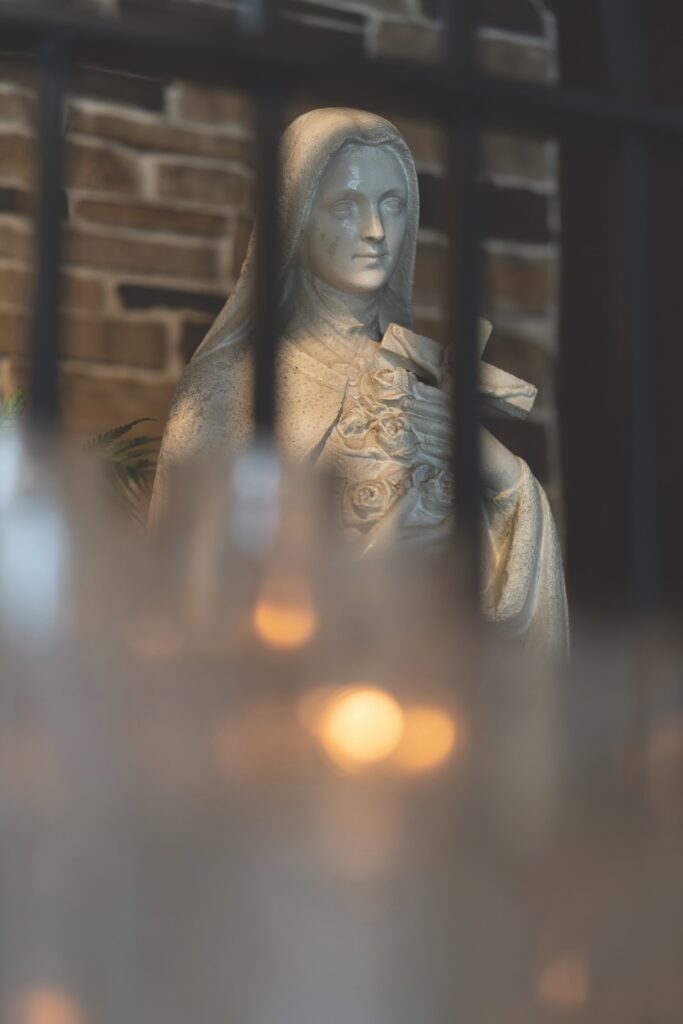
Saint Thérèse of Lisieux, affectionately known as the “Little Flower” of Jesus, has become a highly influential saint and one with close ties to the Diocese of Youngstown. Servant of God Rhoda Wise, whose cause for canonization is being reviewed, said that she was visited by Saint Thérèse and Jesus multiple times in the final years of her life.
The Little Flower was not well-known in her lifetime. Born in Alençon, France, on January 2, 1873, to her devout Catholic parents Zélie and Louis Martin—who both went on to become saints in their own right—Saint Thérèse was the youngest of nine siblings; of the five who survived to adulthood, all became nuns.
Saint Thérèse’s life was never easy. She was not a strong baby, and due to her frailty was entrusted to a wet nurse, with whom she lived until she was 15 months old. Before Saint Thérèse’s fifth birthday, her mother died from breast cancer, and shortly after, the devastated young family moved to Lisieux, where Zélie’s brother lived with his family. Thérèse referred to this time as the most difficult of her life; she struggled with depression and became extremely sensitive, often hiding from others and crying alone, and was frequently bullied at school.
Her older sister, Pauline, who had become like a mother to Saint Thérèse, joined the Carmelites when Saint Thérèse was around 9, leaving her even more isolated, but she eventually chose to follow her sister and join the Carmelite community. She became filled with a new sense of purpose and devotion, believing she “was born for glory” and that she was to dedicate her life to bringing salvation to the world through Jesus. Upon joining the Carmelites—at the young age of 15 thanks to special approval from her Bishop—Saint Thérèse was known to her sisters as a good-yet-unremarkable nun.
Over the course of her life, she suffered various ailments, but her faith always carried her through. Much of what we know of Saint Thérèse is thanks to her remarkable autobiography Story of a Soul, in which she details her internal struggles and the philosophy for which she became known, what she called her “Little Way” of following Jesus.
Although she had entered the cloister with the intention of becoming a saint, after several years in the sisterhood, Saint Thérèse had become aware of her many shortcomings. She had a temper, she would often fall asleep during liturgies or prayers, and she felt she failed to emulate the limitless love exhibited by her sisters. Aware of her “littleness,” Saint Thérèse instead embraced her childlike spirituality and sought to allow Jesus to work through her despite her unceasing flaws. She embraced her smallness, her imperfection, seeking to do Jesus’ will in spite of her own weakness, imbuing every action with His love.
Saint Thérèse tragically passed away at the young age of 24, after falling ill with tuberculosis, in April of 1897, but it is thanks to her confinement in an infirmary that we were blessed with the profound wisdom of the Little Flower. When it became clear that Saint Thérèse would not recover from her illness, the prioress of the convent, Mother Marie de Gonzague, encouraged the young sister to write down her life story, which would eventually become the foundation of her posthumously-published work. Saint Thérèse died on September 30, 1897.
Upon the publishing and dissemination of this text, Saint Thérèse was soon recognized as a deeply profound theologian, and her renown began to spread. Pope Benedict XV dispensed with the usual 50-year delay between a person’s death and their possible canonization in order to hasten the process, and she was canonized May 17, 1924, by Pope Pius XI, to an audience of over 60,000 people gathered in St. Peter’s Basilica. Another 500,000 pilgrims gathered in the square to celebrate her sainthood.
The impact of Saint Thérèse’s philosophy lies in its simplicity and its emphasis on the immediacy of Jesus. Through her “Little Way,” no action is too small to be an act of devotion to Christ. In 1997, Pope Saint John Paul II named her a “Doctor of the Church,” a title reserved for only a very few who have made extraordinary contributions to the Church, such as Saint Thomas Aquinas, Saint Augustine and Saint Teresa of Ávila.
Saint Thérèse is a patron saint of France, those suffering terminal illnesses and those who are without homes, as well as gardeners, florists and aviators. It would also be appropriate to pray to St. Thérèse for the cause of Rhoda Wise’s canonization.
Prayer to Saint Thérèse of the Child Jesus:
O Little Therese of the Child Jesus, please pick for me a rose from the heavenly gardens and send it to me as a message of love. O Little Flower of Jesus, ask God to grant the favors I now place with confidence in your hands… (mention in silence here). Saint Therese, help me to always believe as you did in God’s great love for me, so that I might imitate your “Little Way” each day. Amen.
Saint Blaise of Sebaste: Illnesses afflicting the ears, nose and throat
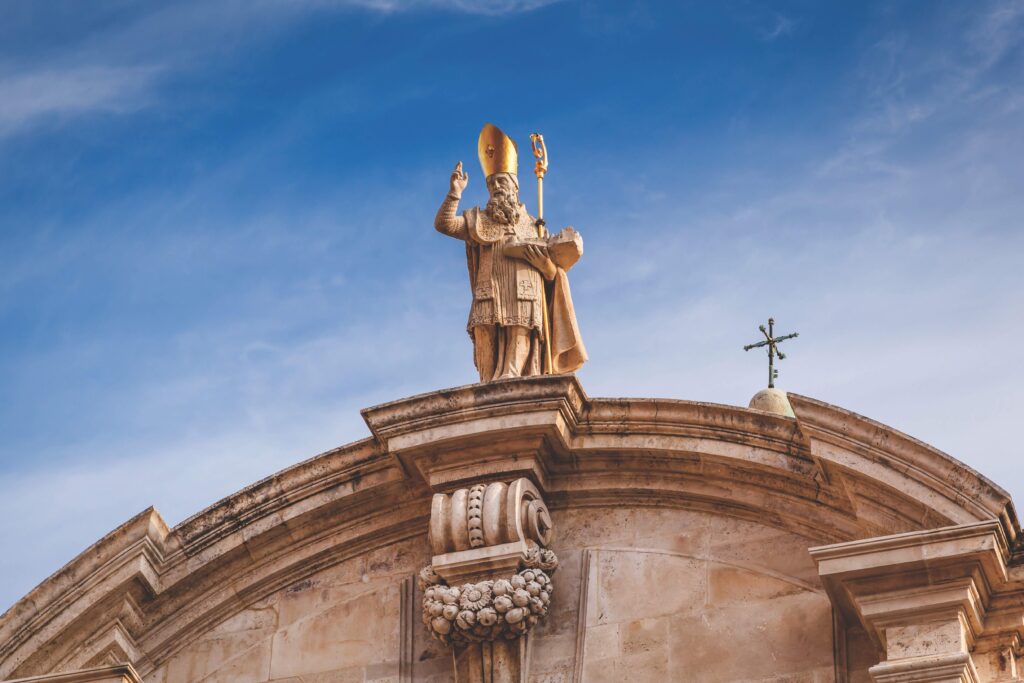
A saint of the early Catholic Church, Saint Blaise of Sebaste—patron saint of those suffering from ear, nose and throat-based illnesses—is known as one of the “Fourteen Holy Helpers,” a group of saints often venerated collectively because of their long history of intercession, especially in cases of illness and disease.
Saint Blaise is estimated to have been in his 30s or 40s when he died in 316 A.D. Much of the history that remains on him is shrouded in myth and legend, but the first reference to him comes from a 6th century medical text by Aëtius Amidenus, a Byzantine Greek physician, who invoked the aid of Saint Blaise whenever treating a patient with an ailment of the throat.
According to the story, Saint Blaise was a healer who became a “healer of souls,” as the Bishop of the Armenian city of Sebaste (now Sivas, Turkey). It is said that people came from far and wide for his miraculous healings, and that he was known for teaching both from the pulpit and by his daily example.
Although Christianity was the state religion of Armenia in 300 A.D., the region was still under the control of the Roman Empire, which began a persecution of Christians under orders from Emperor Licinius in 316 A.D. Saint Blaise, who had retired to a life of solitude and prayer in the wilderness, was arrested by Agricola, the governor of Cappadocia and Lesser Armenia. He was tortured and executed for his faith shortly after his arrest. As the legend goes, while Saint Blaise was being brought back to the city, a mother brought her son to the saint as the boy was choking on a fishbone. He was immediately cured.
Today, the Blessing of Saint Blaise is a ceremony commonly held on his feast day, February 3. As part of the blessing, two candles—blessed on the feast of the Presentation of the Lord—are held in the form of a cross by the priest and are either held over the parishioner’s head or touched to their throat. The priest recites the blessing: “Through the intercession of Saint Blaise, bishop and martyr, may God deliver you from every disease of the throat and from every other illness,” and concludes with the sign of the cross.
Saint Blaise is also the patron saint of the city of Dubrovnik, Croatia, where the Church of St. Blasius can be found, as well as the patron of infants, animals, builders, stonecutters, carvers, drapers, wool workers, the wool industry, veterinarians, physicians, healing and the sick.
Prayer to St. Blaise (From Ascension Press):
O God, deliver us through the intercession of Thy holy bishop and martyr Blaise, from all evil of soul and body, especially from all ills of the throat; and grant us the grace to make a good confession in the confident hope of obtaining Thy pardon, and ever to praise with worthy lips Thy most holy name. Through Christ our Lord. Amen.
Saint Peregrine: Cancer, AIDS and terminal illnesses
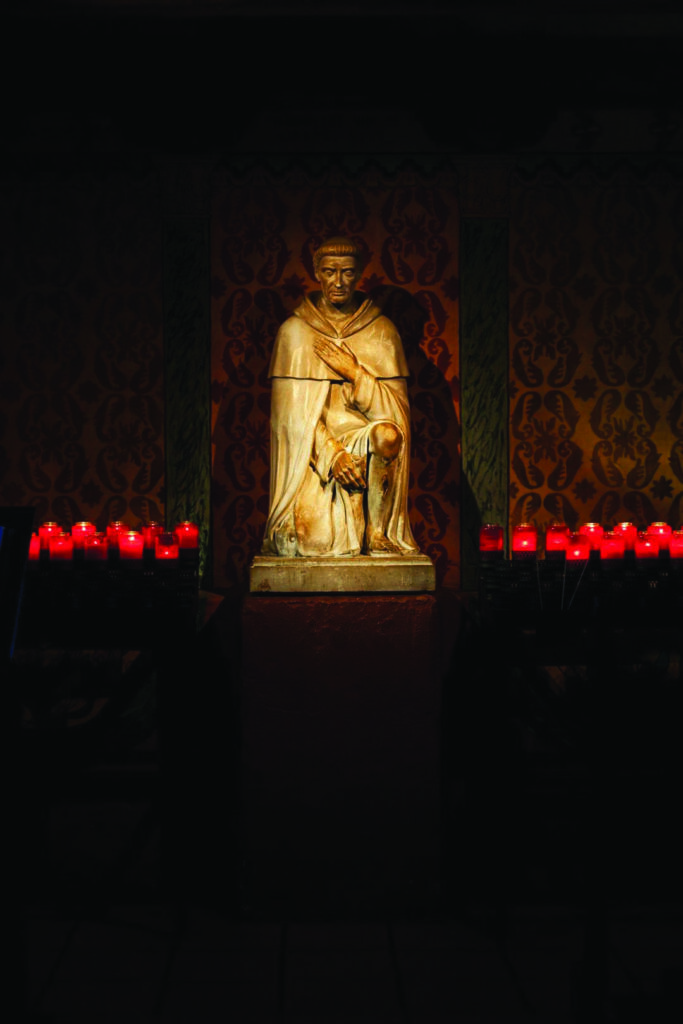
Saint Peregrine Laziosi, born in 1260 in Forli, Italy, is the patron saint of those suffering from cancer, AIDS and other life-threatening illnesses. Saint Peregrine was the only son of the wealthy Laziosi family in Forli, the capital city of the northern Italian province of Forli-Cesena, which was part of the Papal States—a territory directly controlled by the Pope. Saint Peregrine’s family, however, supported the anti-papal faction in the region at the time.
One would not have expected Saint Peregrine to become a priest, much less a revered saint. At just 18, he attacked Saint Philip Benizi, the Prior General of the Friar Servants of Saint Mary, who had been sent to preach to the community of Forli to bridge the divide between the Papacy and the anti-papal faction. Saint Peregrine was ashamed of his actions and sought forgiveness from Saint Philip, who forgave him immediately and instructed him to pray to Our Lady. According to Saint Peregrine, one day after praying to Mary, the Blessed Mother appeared to him in a vision and said, “Go to Siena. There you will find devout men who call themselves my servants. Attach yourself to them.”
Saint Peregrine traveled to Siena and was eventually ordained as a priest by the Servite Order. He became a stalwart supporter of Saint Philip Benizi, who clothed Saint Peregrine in the religious habit himself. After several years in Siena, Saint Peregrine was sent back to his home of Forli to found a new Servite monastery.
He became popular thanks to his fervent preaching, his quality as a confessor and for his devotion to the sick and poor. Apparently, he was widely referred to as the “Angel of Good Counsel,” because of his freely offered wisdom. As a penance for his past sins, Saint Peregrine would stand at all times unless absolutely required to do otherwise—if he grew tired, he would lean against a church pew or a wall.
Eventually, at the age of 60, Saint Peregrine developed a cancerous infection in his right foot that caused him excruciating pain and produced a repulsive scent that isolated him from his brothers. The illness grew so severe that the surgeon determined that the only course of action was to amputate Saint Peregrine’s foot. According to the story, he did not want to undergo the operation, as he felt that his suffering was a sacrifice he could make to Jesus and the Blessed Virgin on behalf of all sinners.
The night before the scheduled operation, Saint Peregrine spent hours in prayer before a fresco of our Crucified Savior, pleading that the leg would somehow not be taken. He fell asleep, and in a dream saw Christ stretching out His hand to touch the infected foot. Saint Peregrine awakened and saw that his foot was healed.
While this healing was indeed miraculous, what was even more incredible was the multitude of wonders produced by Saint Peregrine in its wake. There were many accounts of healings among those suffering from cancer and other illnesses after Saint Peregrine whispered the Lord’s Name in their ears, and there was even a case of Saint Peregrine multiplying bread to feed to the poor. These miracles, combined with his extreme piety and wisdom, brought many back to the faith. Saint Peregrine lived for another 20 years before his death in 1345 and was canonized as a saint in 1726. His feast day is celebrated on May 1.
Prayer to Saint Peregrine (From the Friends of Saint Peregrine)
O God, in Saint Peregrine you gave us an outstanding example of faith and patience. We humbly ask you that by imitating and by the help of his prayers, we believe more fully in your healing help, bear the suffering of this life without wavering, and come with joy to the peace of heaven. We ask this through Jesus Christ our Lord. Amen.
Guardian Angels: Bodily and Spiritual Health, Wellbeing and Protection

Another common figure to whom you can pray is your guardian angel. While not saints in the way we usually think of them, angels are entities in heaven doing the will of God and are therefore permissible to be invoked for intercession. Technically, the Latin origin of “saint” simply means “one who is holy.” In our contemporary Church this is almost always used to refer to a human believer who has died, gone to heaven and has had numerous miracles attributed to their intercession—this was not always the case. Consider, for example, Saint Michael the Archangel: he was never a human being, yet his holiness has long been recognized by the Church. According to the Catholic tradition, an angel is simply a being with will and intellect, but no body. Read about Saint Michael the Archangel in the September 2024 issue of The Catholic Echo at www.CatholicEcho.org.
The phrase “guardian angel” has become so common that many do not realize the deep scriptural basis for the existence of a personal guardian angel, assigned to us at birth for the purpose of praying for us, protecting us and working to ensure that we get to heaven.
Jesus describes these angels just before delivering the Parable of the Lost Sheep; He says, “See that you do not despise one of these little ones. For I tell you that their angels in heaven always see the face of my Father in heaven” (Matthew 18:10-11).
There are also several references to guardian angels in the Old Testament, such as in Psalm 9 where it is written, “For He commands His angels with regard to you, to guard you wherever you go. With their hands they shall support you, lest you strike your foot against a stone” (Psalm 91:11-12).
Many theologians of the Church have expounded on this idea, such as Saint Jerome, who said: “The worth of souls is so great that from birth, each one has an angel assigned to him for his protection,” and Saint Thomas Aquinas who wrote in Summa Theologiae, “Each man has an angel guardian appointed to him. This rests upon the fact that the guardianship of angels belongs to the execution of Divine providence concerning men.” Saint Padre Pio, Saint Basil the Great and Saint John Bosco all taught of the importance of invoking your guardian angel.
Saint Pope John Paul II reaffirmed the Church’s teaching on the role of guardian angels and laid out their proper veneration in a general audience on August 6, 1986, where he said, “God has entrusted to the angels a ministry in favor of people. Therefore, the Church confesses her faith in the guardian angels, venerating them in the liturgy with an appropriate feast and recommending recourse to their protection by frequent prayer, as in the invocation ‘Angel of God.’”
So a guardian angel is not just a pop culture concept, but a deeply Catholic reality. Your guardian angel’s whole purpose is to aid you in achieving salvation—this means they can help you avoid spiritual and even physical dangers. You can pray to them to help you with sins that you may be struggling with, to protect you in times of vulnerability and to help you overcome the temptations of the devil.
The feast day of the Guardian Angels is October 2.
Prayer to your Guardian Angel:
Angel of God, my guardian dear, to whom His love commits me here; Ever this (day, night) be at my side, to light and guard, to rule and guide.
Amen.






